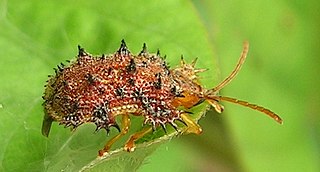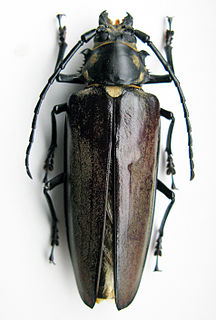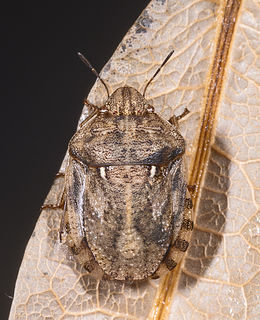
The insects of the beetle family Chrysomelidae are commonly known as leaf beetles, and include over 37,000 species in more than 2,500 genera, making up one of the largest and most commonly encountered of all beetle families. Numerous subfamilies are recognized, but the precise taxonomy and systematics are likely to change with ongoing research.

The tansy beetle is a species of leaf beetle. It measures 7.7–10.5 mm in length and has a characteristic bright metallic green colouration. The common name derives from the tansy plant on which they often feed as both larvae and adults. In addition to the nominotypical subspecies, which repeats the specific name, C. graminis graminis, there are five further distinct subspecies of tansy beetle, which, collectively, have a Palearctic distribution, although in the majority of countries where it is found the species is declining. In the United Kingdom it is designated as 'Nationally Rare' and this localised population, centred on York, North Yorkshire, has been the subject of much recent research.

Cleridae are a family of beetles of the superfamily Cleroidea. They are commonly known as checkered beetles. The family Cleridae has a worldwide distribution, and a variety of habitats and feeding preferences.

The Cassidinae are a subfamily of the leaf beetles, or Chrysomelidae. The antennae arise close to each other and some members have the pronotal and elytral edges extended to the side and covering the legs so as to give them the common name of tortoise beetles. Some members, such as in the tribe Hispini, are notable for the spiny outgrowths to the pronotum and elytra.

Charidotella sexpunctata, the golden tortoise beetle, is a species of beetle in the leaf beetle family, Chrysomelidae. It is native to the Americas.

Halyzia sedecimguttata, or orange ladybird, is a species of Coccinellidae (ladybirds) family.

Callipogon relictus is a species of longhorn beetle which is mostly found in Korea, but also in China and southern part of Russian Far East. It inhabits mixed and deciduous forests. The population of Callipogon relictus is decreasing due to deforestation and uncontrolled collection, and therefore the species are listed in the Russian Red Book.

Chrysomela populi is a species of broad-shouldered leaf beetle belonging to the family Chrysomelidae, subfamily Chrysomelinae.

Gonioctena fornicata is a species of broad-shouldered leaf beetles belonging to the family Chrysomelidae, subfamily Chrysomelinae.
Denaeaspis is an extinct genus of tortoise beetle in the family Chrysomelidae and containing a single species Denaeaspis chelonopsis. The species is known only from the Middle Eocene Parachute Member, part of the Green River Formation, in the Piceance Creek Basin, Garfield County, northwestern Colorado, USA.

Eurygaster maura, also known as tortoise bug, is a species of true bugs or shield-backed bugs belonging to the family Scutelleridae.

Lilioceris is a genus of beetles in the leaf beetle family, Chrysomelidae. The genus was first scientifically described in 1912 by Edmund Reitter. Lilioceris belongs to the subfamily Criocerinae and tribe Criocerini.

Chiridopsis punctata is a species of leaf beetles belonging to the family Chrysomelidae.

Sphaeroderma testaceum, the artichoke beetle, is a species of flea beetles in the family Chrysomelidae.

Gratiana pallidula, the eggplant tortoise beetle, is a species of tortoise beetle in the family Chrysomelidae. It is found in Central America and North America.
Xenicomorpha is a genus of beetle belonging to the leaf beetle family, Chrysomelidae, containing a single species, X. scapularis. Both the larvae and the adults (imago) are herbivores.

Epistictina reicheana, is a species of leaf beetle found in India, Nepal, Sri Lanka and Tasmania.
Laccoptera (Laccopteroidea) quatuordecimnotata, is a species of leaf beetle native to India, and Sri Lanka.
Notosacantha vicaria is a species of leaf beetle native to India, and Sri Lanka.
Silana farinosa, commonly known as curry-leaf tortoise beetle, is a species of leaf beetle native to Indo-China, India, Sri Lanka, Thailand and introduced to Peninsular Malaysia.














